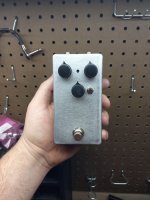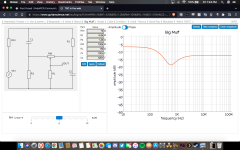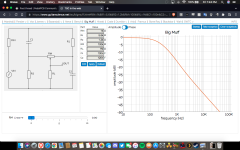cdwillis
Well-known member


I assembled this over a couple weeks. I started on it then realized I was missing a few parts, hence the eternity it took to finish. I used a couple resistors from the odds and ends section of my parts stash. Since a couple were 1/2w I had to stand them up. Of course I got the resistors I needed when my capacitors came in, but I hate desoldering so I left the standing resistors in. I've seen both 150pf and 330pf caps in different schematics, so I used a couple sockets to test between them. Right now it has the 150pf cap in place. I haven't tried the larger cap. It'll probably make it smoother, but I don't find this build nearly as scratchy sounding as some of the op amp muff demos I've heard on youtube.
I've never played an op amp muff, so I wasn't sure what to expect. It doesn't sound nearly as full or bass heavy as most of my other muffs. I'd say it may be close to something like the NYC muff as far as low end. The tone bypass option give it a nice full sound. Activating the tone knob cuts signal as I anticipated. What I find strange is turning the tone control counterclockwise / down does remove high end, but also seems to cut a lot the signal down as it goes. I'm guessing this is just how the tone control works since I put the tone control values into the BMP tone stack calculator on the online version of Duncan amps and it shows the signal being cut starting at the bottom of the guitar's frequency range.
Tone control at noon:

Tone control backed all the way down:


